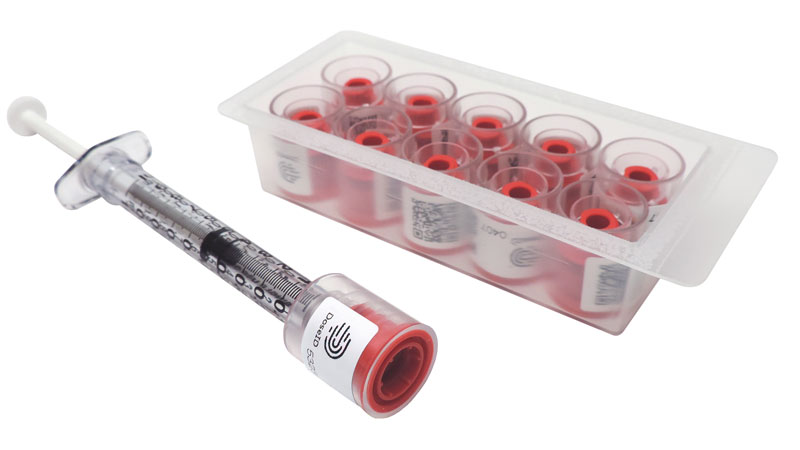The Staggering Cost of Diversion
A recent study published in the Journal of Hospital Medicine cited the vast costs diversion poses for Health Systems. “Hospitals bear the cost of diverted drugs, internal investigations, and follow-up care for affected patients, and can be fined in excess of $4 million dollars for inadequate safeguards.”1 The estimated aggregate cost of controlled prescription drug diversion and abuse to both public and private medical insurers is approximately $72.5 billion a year. By virtue of their daily access to controlled substances, it is estimated that 15% of pharmacists, 10% of nurses, and 8% of physicians are challenged with alcohol and/or drug dependency. 2
Diversion occurs more commonly than perceived. Diversion Speciality, LLC, founder Kimberly New JD, BSN, RN, asseverates the proliferation of diversion in facilities of all sizes and sectors. “Diversion occurs at small critical access hospitals, prestigious academic medical centers, children’s hospitals, physicians’ offices, surgery centers, nursing homes, and other types of facilities. In reality, every facility that manages controlled substances is at risk and will have diversion.”3
An even more troublesome reality is that many Hospitals are using actual instances of diversion as the first indications that such an event is occurring within their facility. At this point, the damage has been done and with no comprehensive plan, the costs of diversion are innumerable. Facilities risk damage to their reputation, employee safety, criminal prosecution, civil malpractice suits, substantial fines from the DEA, and most importantly patient safety. Patients are the most critical of diversion’s victims. Whether by being cared for by a clinician under the influence, or not receiving the accurate medication dosing, patients are all too susceptible to victimization. Such ineptitudes can cause additional and unnecessary suffering or even death. The costs of diversion are severe, both financially, organizationally, and publicly.
The Power of Data & Tamper Evident Technology
New, advocates, “Rather than simply react to diversion after it occurs, it is important to identify anomalous drug usage early and take swift, preventive action.”The importance of developing a comprehensive drug security program to prevent diversion acts before they occur cannot be overstated.” Because diversion can happen at any point in the supply chain, traceability, visibility, and security are paramount. Radio Frequency Identification (RFID) equips hospitals and pharmacies with realtime, anytime, anywhere access to analytics and 100% accurate visibility down to item level. The technology has the ability to link patients and providers creating a multitude of exciting, data-driving, high-value opportunities for enhancing drug security programs, and more. Live view of controlled substance custody, and traceability down to exact syringe level are critical technological advancement in the fight against diversion. The data enabled by RFID technology can go so far as to detect outlier behavioral patterns, documentation trends, and other anomalous usages.
Recently DoseID, the first member-driven consortium for the use of radio-frequency identification technology in the healthcare space was formed. The interoperable capabilities effectuated by DoseID RFID provide vastly more data than just product identification. It provides a history of the item that captures every location, handling event, or status change, to allow for the tracking of data such as refrigeration expiration, dose preparation, and recalls.5
In a Study Conducted by Angela M. Wicks, PhD, John K. Visich, PhD, and Suhong Li, PhD, entitled RFID Applications in Hospital, the authors found that the benefits of RFID extend beyond diversion prevention. The technology has the ability to mitigate diversion but can also improve supply chain efficiency and “translate into saving lives or improving patient outcomes. The technology can increase patient safety, speed critical treatments, and provide better tracking of patient drug-treatment compliance that leads to better follow-up treatment. Benefits of RFID also include lower direct and indirect labor costs.”

International Medical Industries, an industry leader in tamper-evident closure devices has been developing diversion combating products for the pharmacy for over a century. The Prep-Lock™ Brand of Tamper-Evident Caps is trusted by over 80% of the top 503B pharmacies to secure IV syringes. They are an easy way to provide an additional level of security to your medications as they travel from pharmacy to patient.
Unit level visibility and analytic capabilities are instrumental in mitigating diversion and loss. The additional benefits augmented by automation further support cost reduction, and overall patient and HCP safety.
References.
1. Journal of Hospital Medicine Vol 14 | No 7 | July 2019 – https://www.journalofhospitalmedicine.com/jhospmed/article/202732/hospital-medicine/diversion-controlled-drugs-hospitals-scoping-review
2. MR Baldisserri, Impaired Healthcare Professional. Critical Care Medicine. 2007 35(suppl):S106-16
5. https://doseid.com/benefits/pharmaceutical-manufacturers/

